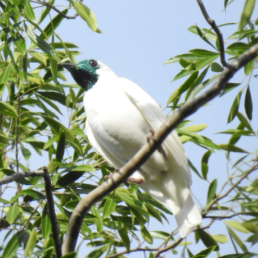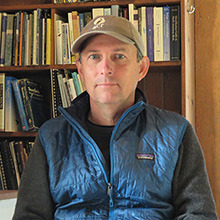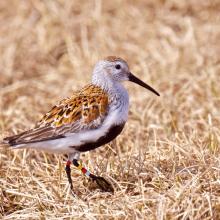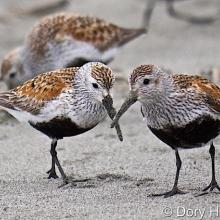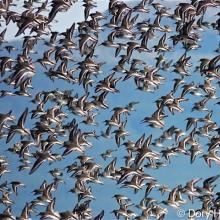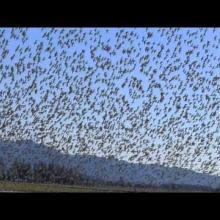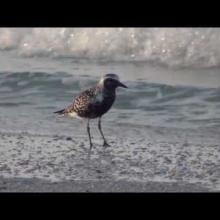

Join BirdNote tomorrow, November 30th!
Illustrator David Sibley and actor H. Jon Benjamin will face off in the bird illustration battle of the century during BirdNote's Year-end Celebration and Auction!
For shorebirds like Bar-tailed Godwits, Black-bellied Plovers, and Dunlin, mud matters. Few mudflats are more important than those of the Yellow Sea along the coast of China, and North and South Korea, where more than 70 species of shorebirds rest and feed. For several species of shorebirds, their entire population relies on the mudflats of the Yellow Sea as a critical fueling stop during migration. Nils Warnock, then the Executive Director of Audubon Alaska, explains why this habitat is so vital to the survival of shorebirds.
BirdNote®
The Importance of the Yellow Sea to Migrating Shorebirds
Featuring Nils Warnock, Ph.D.
Interview by Todd Peterson
This is BirdNote.
[Flock of Dunlin with the pound of distant surf]
For shorebirds, like Bar-tailed Godwits, Black-bellied Plovers and Dunlin, mud matters. Few mudflats in the world are more important than those of the Yellow Sea along the coast of China, and North and South Korea. There, more than 70 species of shorebirds rest and feed [call of Whimbrel]. Nils Warnock, Executive Director of Audubon Alaska, explains:
“That food in the mud gets converted into fat that they use to fuel their migration. There’s eight shorebird species where sometimes their entire population, relies on the Yellow Sea as one of these critical fueling stops. [And all of these eight species of shorebirds are declining…]”
What’s happening on the Yellow Sea coast that’s hitting shorebirds so hard?
“You’ve got, first of all huge population and very high human densities. Chinese especially, but also certainly in South Korea, huge economic engine burning right now. And so the cheapest place to build and expand is to go out onto your tidal flats… About 386 square miles of mudflats being filled in per year in the Yellow Sea, the equivalent of San Francisco Bay [in certain years].
Especially the long distance migrants, they can’t do it without the fuel. It’s as if you’re an airplane and you’re flying over the Pacific. It’s not an option of landing. If you run out of gas, you’re in big trouble.”
You can find links to Audubon’s work on the issue, at our website, BirdNote.org.
###
Bird sounds provided by The Macaulay Library of Natural Sounds at the Cornell Lab of Ornithology, Ithaca, New York. Calls of flock of Dunlin [59435] recorded by W.W.H. Gunn.
Distant surf Nature Essentials SFX #27 recorded by Gordon Hempton of QuietPlanet.com.
BirdNote’s theme music was composed and played by Nancy Rumbel and John Kessler.
Producer: John Kessler
Executive Producer: Chris Peterson
© 2013 Tune In to Nature.org November 2013 Narrator: Mary McCann.
ID# yellowsea-02-2013-11-21yellowsea-02Marantz V Tracks 235, 236, 237, 257
www.audubonalaska.orghttp://www.audubonmagazine.org/articles/birds/stemming-tide-shorebird-l…
Link to East Asia Flyway: https://www.eaaflyway.net/
Web users are encouraged to go to Google Earth to see how huge wetlands are being diked and filled in along the coastline of the Yellow Sea.
